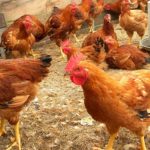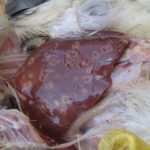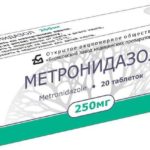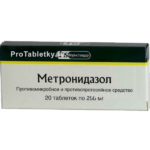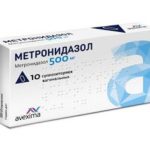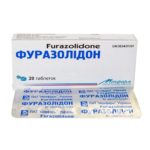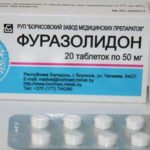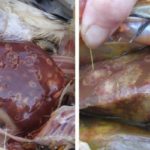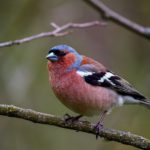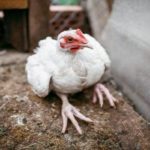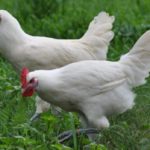Poultry diseases threaten livestock in homestead farms and large enterprises for mass breeding of chickens, turkeys, guinea fowl, geese, ducks and other species. This causes serious property damage, so disease control is extremely important. One of the dangerous diseases that can destroy a lot of birds is histomoniasis in domestic chickens.
Causes of histomoniasis in chickens
The disease is provoked by the penetration of protozoa from the class of flagellates into the body.These are histomonads that can infect the most sensitive chicks of chickens and turkeys in the age group from two weeks to three months.
Histomoniasis negatively affects the protective barrier function of the avian intestine, which leads to an inflammatory process, general intoxication and decreased absorption of nutrients from ingested food. Protozoa lead to infection of tissues, especially the liver, leading to dysfunction of organs, most often to peritonitis. In the absence of timely treatment, up to 70% of all young animals die.
The source of infection with histomoniasis are insects: fleas, mosquitoes, earthworms and other representatives of this group, which can be eaten by chickens and other poultry. You can also become infected from poor-quality food, dirty bedding and unwashed feeders and drinkers, as well as during transportation in undisinfected cages or boxes.
Histomoniasis occurs in two stages:
- Zhgutikova.
- Amoebic.
The disease can also occur in acute and chronic forms. In the acute form, chicks and adolescents die quickly, within a few days. The chronic form continues throughout the life of a chicken over 3 months, shortening it and leading to the spread of the disease.
Signs and symptoms of appearance
Due to the characteristic blackening of the scalp in poultry, the disease has acquired another name - “black head”. When infected with histomoniasis in its acute form, the comb and scalp darken, the bird looks unkempt and disheveled, and the feathers are stained with guano. Chickens are lethargic, have a decreased appetite, have sagging wings and show signs of severe diarrhea.They can cover their heads and eyes, and huddle in groups.
In the chronic form of histomoniasis, chickens eat worse, are not cheerful, and lose the bright color of their plumage. The disease is most pronounced in the summer, because at this time of year the maximum number of insects is available to chickens, which can be sources of the disease.
When opening a carcass infected with histomoniasis, an enlarged liver and spleen, inflamed intestines, curdled contents of the cecum, ulcers, adhesions, and brown fluid in the abdominal cavity are found.
Diagnosis of the problem
To determine the cause of damage to the poultry population, it is necessary to carry out laboratory diagnostics. It is extremely difficult to distinguish histomoniasis from other common infections (colibacillosis, trichomoniasis, tuberculosis, leukemia or eimeriosis) by external signs. For diagnosis, a scraping is taken from the intestinal mucosa and the contents of the cecum are examined under a microscope. Smears are stained according to Romanovsky, and they are also inoculated on Petrovsky’s medium. The final diagnosis of histomoniasis is made based on the totality of the results obtained, assessing both external signs and laboratory results.
Treatment of disease in chickens
The main condition for successful treatment of histomoniasis in chickens is timely detection and accurate diagnosis of the disease. To get rid of simple microorganisms, drugs from the group of imidazoles are used. These are Metronidazole (Trichopol), Tinidazole, Nitazol and a number of other similar drugs.
"Metronidazole"
To treat with this drug, it is dissolved in warm water and given to young animals three times a day.If the chicks do not want to drink the medicine on their own, it is instilled into their beaks in the form of a solution of 0.1 milligrams of the drug per kilogram of the chicken’s body weight. For adult sick chickens, the drug can be added to the feed. To do this, Metronidazole tablets are ground into powder and sprinkled on food at the rate of 1.5 grams of product per kilogram of bird weight.
Treatment of histomoniasis lasts from 5 to 7 days, then the frequency of giving to chickens and the dosage of the drug is reduced to once a day. "Trichopol" is used in a similar way.
"Furazolidone"
This drug is added to the feed in a concentration of 0.02-0.04%.
After a course of treatment, chicks and chickens need to be treated with probiotics to restore internal balance in the body. The veterinary drug Vetom is best suited for this purpose. With its help, it is possible to avoid the development of dysbacteriosis, which will have an extremely negative impact on the condition of an already severely weakened bird.
Also, all poultry will have to undergo deworming, as this is necessary to strengthen the general immune system and restore the health of the chickens. The following drugs are used for this:
- "Piperazine" at a dosage of 0.5 grams per kilogram of weight.
- “Phenothiazine” at a dose of 1 gram per kilogram of body weight and some other drugs.
The duration of treatment is 2-3 days.
Preventive actions
In order to avoid damage to chickens by histomoniasis, the following requirements must be observed:
- Keep young and adult birds in separate rooms.
- Clean frequently to remove droppings.
- Disinfect collected droppings by storing them in layer-by-layer stacks. Due to the dense packing, oxygen does not enter inside, and pathogens die.
- Wash and regularly disinfect drinking bowls and feeders with special preparations.
- Regularly disinfect premises where poultry is kept, whitewash walls and ceilings with lime.
- When purchasing new birds or chicks, keep them in quarantine, away from the main stock.
- If signs of illness are detected, immediately remove the sick chicken or chick from the general mass and carry out the necessary disinfection actions.
- Start diagnosis and treatment as early as possible. This way there is a greater chance of saving the chickens. As the disease progresses, a high percentage of birds (up to 90%) die.
Histomoniasis is a dangerous disease of chickens, turkeys and other poultry. You can cope with it by maintaining perfect hygiene and paying close attention to your feathered charges.


